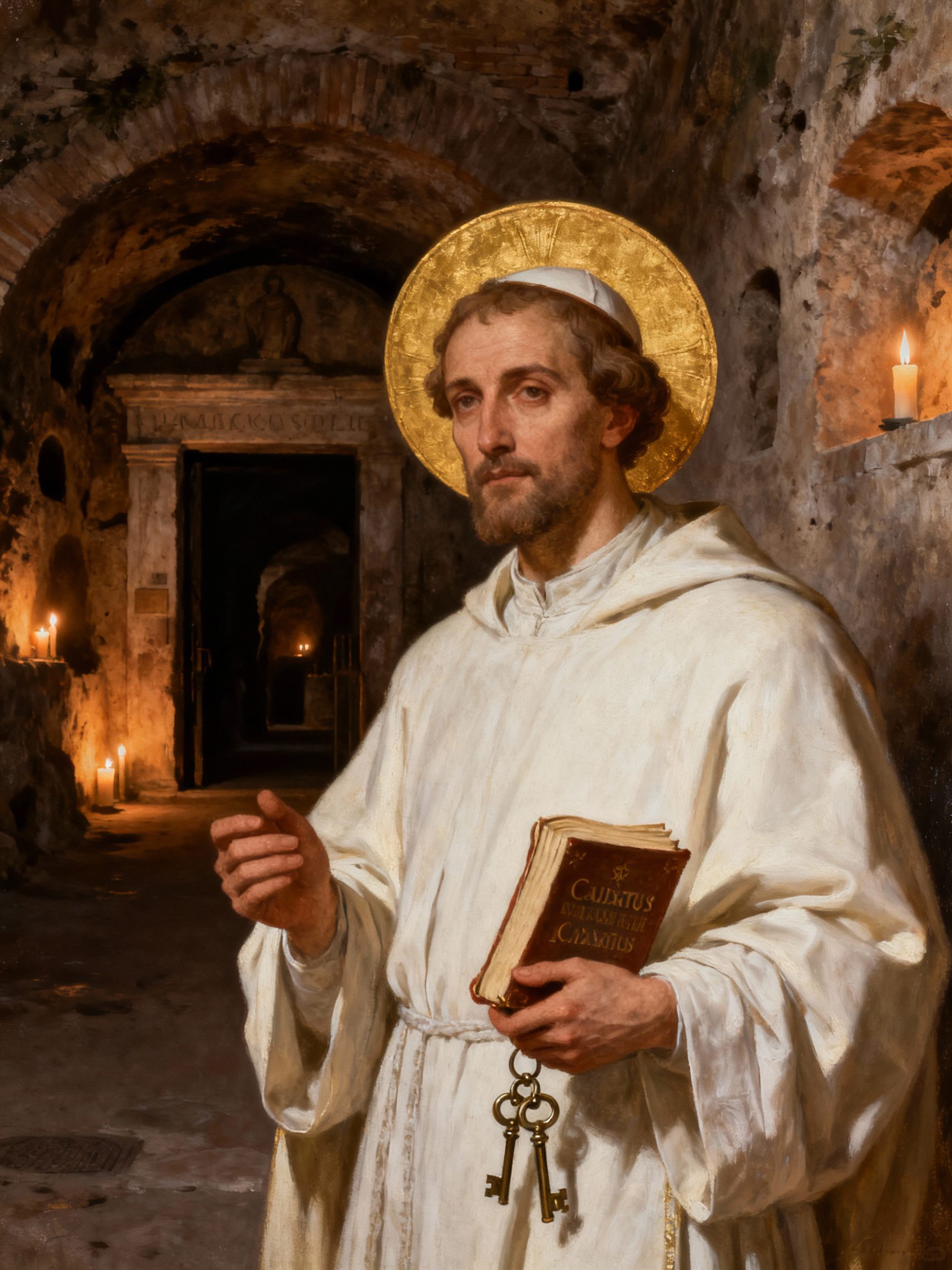Saint Callistus I, Pope of Mercy
Saint Callistus I, sometimes written Callistus, remains one of the most significant figures of the third century. A freed slave who became the 16th Bishop of Rome, Pope from 217 to 222, he embodied a bold and profoundly evangelical pastoral vision founded on mercy, acceptance, and reconciliation. Organizer of the catacombs that bear his name, he was also a pastor in crisis, grappling with the internal tensions of an already diverse Church and with doctrinal controversies that shaped Orthodoxy. His martyrdom, which occurred during a riot in Trastevere, sealed a life dedicated to the service of Christ and his Church.
Essential portrait
- Name: Calixtus (Callixtus, Callistus), Pope from 217 to 222
- Context: Church of Rome at the beginning of the 3rd century, intermittent persecutions, social and doctrinal changes
- Landmarks: Freed slave, deacon of Zephyrinus, administrator of the cemetery of the Appian Way (catacombs of Saint-Calixte)
- Legacy: Merciful penitential discipline, welcoming of sinners, relaxation of entry into the catechumenate, permission for marriages between slaves and free people
- Memorial: October 14, martyrdom in Rome, buried in the cemetery of Calepoda, Via Aurelia
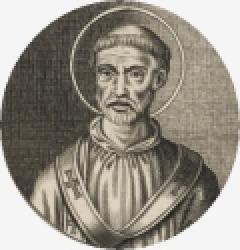
Rome at the turn of the 3rd century
The third century opened on a troubled world. The Roman Empire remained powerful but weakened. Christians were now visible in the major cities, particularly in Rome. Their growth raised questions: how to welcome converts from diverse backgrounds? How to live unity when competing doctrines emerged? In this context, the Bishop of Rome was not only a spiritual leader; he must manage tensions, protect his people, preserve the faith received from the apostles, and organize community life, including burial and assembly places.
A Christian slave grappling with the world
Ancient sources describe a difficult start to his life. Callistus was a Christian slave entrusted by his master with the management of a bank. The company went bankrupt, and his discredit was such that he was condemned to the mines of Sardinia, a harsh and often fatal punishment. In this darkness, an unexpected glimmer of hope emerged: Marcia, mistress of the Christian-friendly Emperor Commodus, interceded on behalf of some of the condemned; Callistus was among those who obtained a pardon. He then withdrew from Rome for a time, receiving the discreet but real support of Pope Victor, who helped him devote himself to the study of the Scriptures.
This passage is decisive. Callistus is no longer just a survivor; he becomes a student of the Word. He learns patience as one learns a new alphabet. The weight of his experience will mark his theology: mercy is not a weak concession, it is the very strength of the Gospel that raises the sinner.
Under Zephyrin: the archdeacon and the organizer
During the pontificate of Zephyrinus, Callistus became archdeacon, that is, the principal collaborator in charge of central missions. He was given the responsibility of developing a community cemetery on the Appian Way. This burial space, known today as the Catacombs of Saint Callistus, would become one of the most sacred and emblematic places of early Christianity. Several third-century popes, martyrs, and countless baptized people whose memory is intertwined with that of the Church of Rome would be buried there.
Organizing a cemetery, at that time, was not a secondary task. It was about structuring a community in its relationship to death and hope. The underground galleries protected the remains, but above all, they protected the promise: Christ is risen, and those who die in him will be resurrected. To inscribe the people of God in a unique, orderly, and lasting place was to build a house for faith across generations.
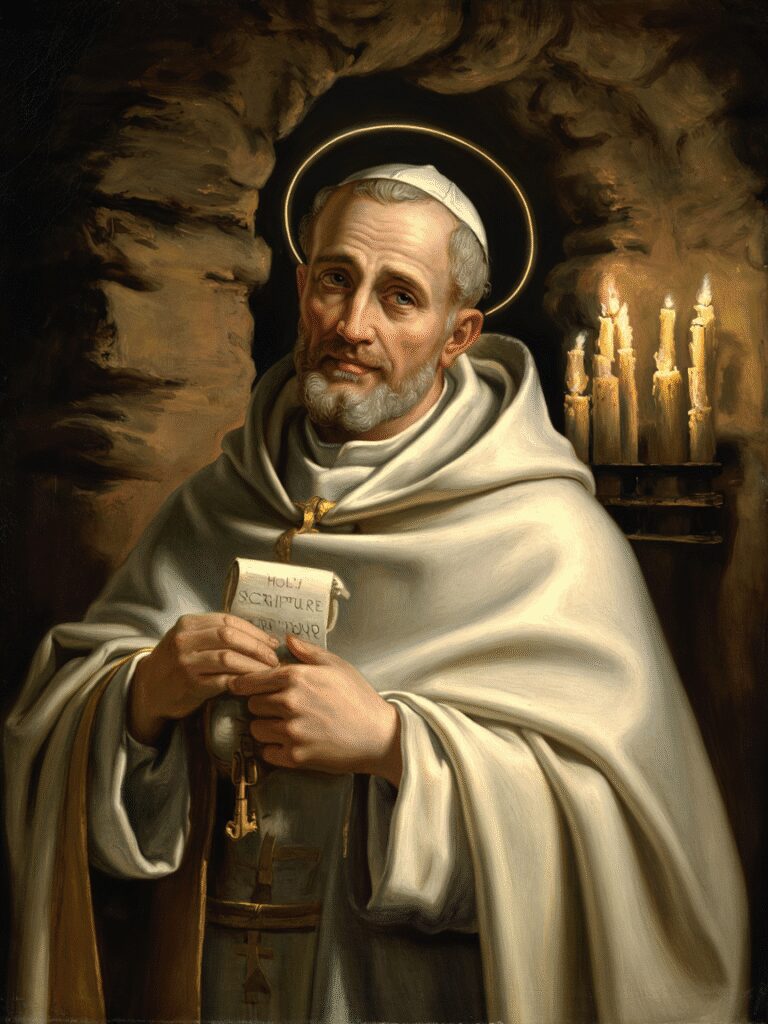
Elected Bishop of Rome: a pastoral fatherhood
In 217, Callistus was elected Bishop of Rome. His pontificate, short in years but immensely fruitful, took place during a period of latent disorder and doctrinal debate. Every decision counts because it touches the heart of Christian life.
Among its significant measures, two decisions have given rise to debate and sometimes misunderstanding:
- He authorized, against civil law, marriages between slaves and free people. Symbolically, this is a bombshell. Callistus asserts that the sacrament is not subject to social hierarchies. Christian marriage is not a class privilege; it is a covenant before God, offered to the baptized.
- He made every sincerely repentant sinner receive penance, however great their faults. Here again, he refused to make the Church a community of the perfect elect. The Church is a hospital, not a museum. Wounds are healed by grace, and a return to communion is possible.
One Church, many temperaments: the controversy with Hippolytus
The figure of Hippolytus, priest and theologian, stands opposite Callistus. Scholarly, demanding, concerned with the purity of doctrine and discipline, Hippolytus reacts to Callistus' pastoral orientations, which he considers too lenient. The disagreement becomes a fracture: Hippolytus leads a group of faithful into a lasting schism, becoming the first known antipope in history.
The underlying issue is twofold:
- On the doctrinal level, Christological controversies surrounding the Trinity and the modalities of the union of the Father and the Son agitated minds. Callistus, contrary to the accusations, did not deviate from the apostolic faith, but refused to follow the overly narrow interpretations that closed the door to the universality of salvation.
- On the disciplinary level, the question is that of the authority to "bind and loose" entrusted to the Church. Public penance, then in force, had strict rules. Callistus maintains the requirement of conversion, but allows grace to breathe. His criterion is not weakness; it is the realism of the Gospel carried by the Spirit.
Posterity has made a nuanced decision: Hippolytus himself is venerated as a saint, a sign that truth can bring together even those whom history has separated. Callistus's work, however, has been recognized as pastoral and Catholic in the strongest sense: directed toward the whole of the Church.
Penitential discipline according to Callistus
Receiving sinners does not mean evading sin. Callistus calls for a sincere approach: confession, conversion, possible reparation, and reinstatement. Forgiveness is not a simple moral acquittal; it is sacramental, ecclesial, and realistic. Sin hurts the whole body; penance heals the whole body by restoring charity. In the logic of the time, the bishop plays a crucial role: he presides over discipline, arbitrates difficult cases, and embodies the fatherhood of God.
Some, like Tertullian, who had become a rigorist, mocked this mercy as a weakness. But Callistus's insight was rooted in Scripture and living tradition: God loves to forgive, and the Church must open the door to return. Holiness is not the non-fall, but the ability to rise again in Christ.
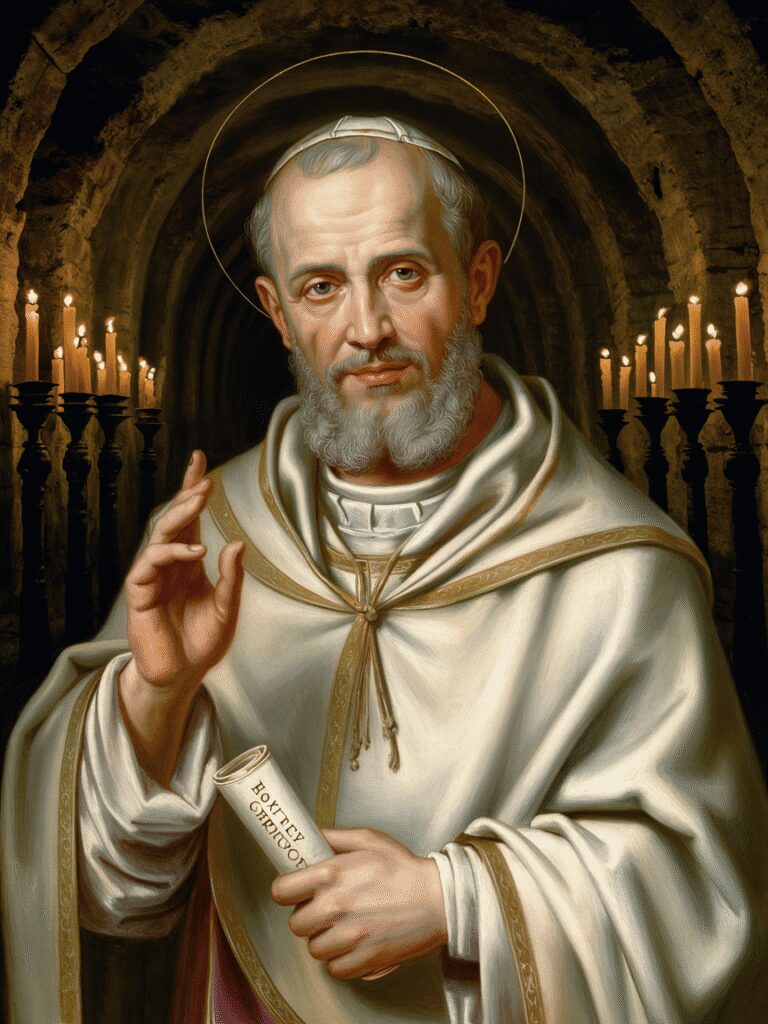
The catechumenate: an open door, but not wide open
Calixtus eases access to the catechumenate. This is not about lowering the bar, but about recognizing the diversity of paths. In Rome, candidates come from everywhere, from all walks of life. The time of trial remains, the formation is real, but the presumption of exclusion has no place. By facilitating entry into the process, Calixtus encourages the growth of the Church, without renouncing accompaniment.
Marriage and Evangelical Justice
Authorizing marriage between slaves and free people means giving precedence to baptismal dignity over civil status. The Church does not suddenly abolish slavery, but it sows its demise in action. By declaring that fundamental freedom and equality are at stake before God, Callistus contradicts the logic of the world. The sacrament becomes the place where the social order bows before grace.
This courageous innovation has profound repercussions. It forces communities to rethink the reception of couples, the registration of children, and pastoral coherence. In contemporary terms, one might say that Callistus is practicing a practical synodality: he listens, discerns, and decides for the good of individuals and for unity.
The Pastor of the Catacombs
The catacombs of the Appian Way, which Callistus structured, form an underground world of faith, art, and memory. Sober frescoes, symbols (the fish, the anchor, the Good Shepherd), brief epitaphs: everything speaks of Christian hope. The underground is not the hiding place of fear: it is the matrix of a culture. The Church of the Martyrs is not fascinated by death; it recognizes in it the passage to life.
The topography of this cemetery, with its cubicles, galleries, and niches, reflects an organized, united community, aware of its vocation. Several popes were buried there in the 3rd century, a sign of the authority of this place. Paradoxically, Callistus himself does not rest in "his" cemetery, but in the cemetery of Calepodus, on the Aurelian Way, where he was laid to rest after his violent death.
Martyrdom in Trastevere
Tradition reports that Callistus died during a riot against Christians in Trastevere in 222. Some accounts speak of a brutal execution, or even of his body being thrown into a well. The point lies elsewhere: Callistus sealed with his blood the doctrine of mercy he had preached. He did not respond to violence with violence, but with sacrifice.
His burial in the Calepoda cemetery establishes an anchor point for memory. The Roman liturgy keeps his memory on October 14. Tradition sometimes associates his name with the ancient titulus that would become Santa Maria in Trastevere; whether he was its founder or its inspiration, Trastevere retains his imprint.

Doctrinal and pastoral heritage
- A normative mercy: For Callistus, mercy is not an option; it is a principle of ecclesial government. It requires discernment, yes, but it obliges us to welcome it.
- The primacy of baptism: Decisions on marriage and access to the catechumenate demonstrate that baptismal grace re-establishes the identity of people beyond civil status.
- Unity in Diversity: The Hippolytus schism shows that truth can be held hostage by rigor as well as by laxity. Callistus seeks the Catholic way: broad, but straight; merciful, but faithful.
- A structured Church: Catacombs, discipline, formation: Calixtus builds a visible, memorial and missionary Church.
Essential Chronology
- Towards the end of the 2nd century: Calixtus, a Christian slave, involved in financial management which turns into a disaster.
- Sentenced to the mines of Sardinia; pardon obtained through the intercession of a person close to the imperial court.
- Withdrawal from Rome; support of Pope Victor; study of the Scriptures.
- Under Zephyrinus: archdeacon; development of the cemetery of the Appian Way (catacombs of Saint-Calixte).
- 217: Elected Bishop of Rome.
- 217-222: Major pastoral measures (penance, catechumenate, socially mixed marriages). Conflict with Hippolytus.
- 222: Martyrdom during a riot in Trastevere; burial in the Calepoda cemetery, Via Aurelia.
Misconceptions and historical points
- Callistus, doctrinally suspect? No. The criticisms of Hippolytus and certain rigorists were severe, but ecclesiastical tradition recognizes the orthodoxy of Callistus.
- A "pope of the weak"? He was rather a strong pastor, who dared to make decisions against the prevailing opinion and even against civil law when the Gospel demanded it.
- The catacombs, clandestine hiding places? They served as refuges at times, but above all as community necropolises and places of memory and prayer.
Holiness and Government: A Demanding Alliance
Governing a nascent Church involves holding together doctrine and discipline. Callistus sacrifices neither. He broadens the path without erasing it. His genius lies in a pastoral reading of the Scriptures: Jesus does not send away the adulterous woman to better condemn; he raises her up so that she sins no more. Mercy is always ordered to truth, and truth, to be salutary, needs mercy.
The gaze of opponents: a paradoxical grace
The testimony of opponents can, paradoxically, reveal the stature of a saint. The pamphlets of yesteryear, sometimes unjust, nevertheless show that Callistus shifted the boundaries. He was a sign of contradiction. Such a sign, in the history of the Church, is not a flaw: it is often the mark of a prophecy. In this sense, the rigorous Tertullian himself, in criticizing mercy, confirms to us that Callistus posed a burning question: how far does forgiveness go? The Gospel's answer is clear: to the very end.
A Spiritual Tour: The Catacombs Today
To visit the so-called catacombs of Saint Callistus is to encounter the silence of the origins. The hollowed-out corridors, the niches, the catechetical symbols still speak. We understand then that the Church has always lived from the communion of saints: the living and the dead united in Christ. These sites teach sobriety, hope, patience. They teach us to wait for eternal life as we wait for dawn.
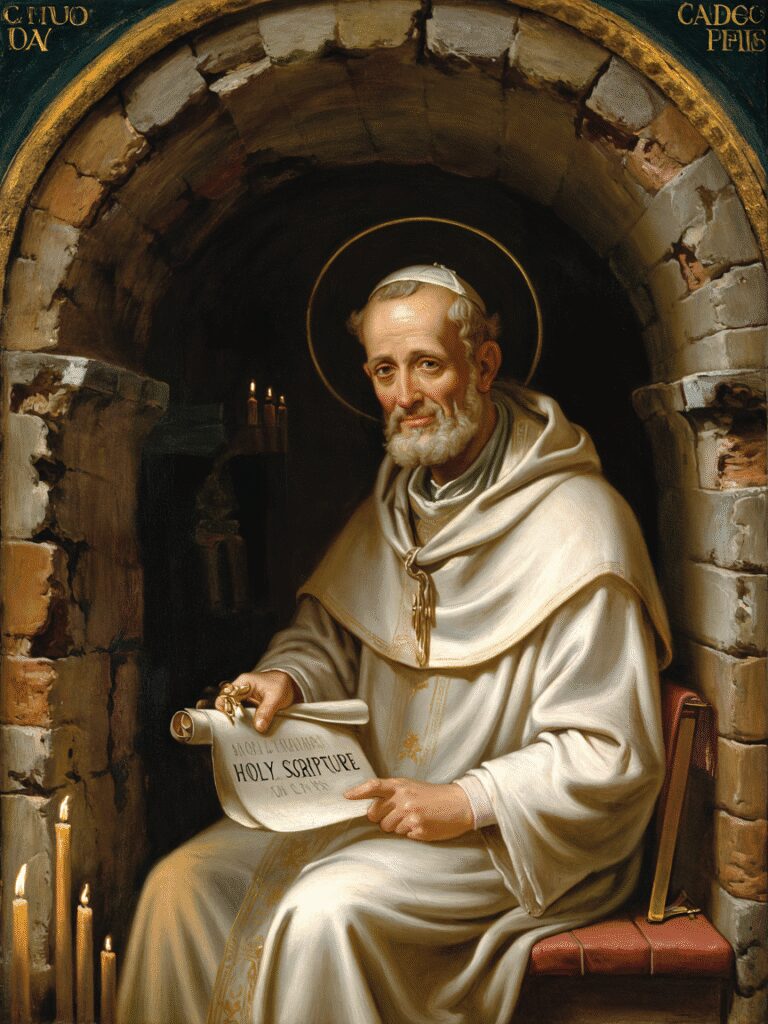
Calixtus and our time: mercy, justice, hope
- Mercy: The Church of our time, faced with sometimes unprecedented wounds, finds in Calixtus a model of intelligent welcome, which never abandons the call to conversion.
- Justice: Decisions on marriage prefigure a Christian vision of dignity. They question our social structures: what place do we give to vulnerable people?
- Hope: The catacombs symbolize stubborn hope. Where history seems to collapse, faith carves galleries of light.
Spiritual landmarks from his life
- The fall does not have the last word: From bankruptcy to holiness, Callistus's journey proclaims that God can redo everything.
- Mercy governs: It is not a supplement to the soul; it is the backbone of a Church that wants to resemble Christ.
- Unity costs: It requires forgiveness, patience, dialogue with those who oppose them, sometimes to the point of schism.
- Memory saves: Organizing remembrance (catacombs) is an act of faith. To remember is to remain faithful.
Prayer to Saint Callistus I
God of mercy, who gave Saint Callistus the heart of a shepherd,
you who raised him from humiliation and established him as a servant of your Church,
make us witnesses of forgiveness that lifts up and heals.
Through his intercession, teach us
to welcome without calculation,
to correct without hurting,
to govern our lives with truth and gentleness.
You who, through his ministry, opened the door of reconciliation,
empowers our communities to never close the way back,
to serve the little ones,
and to place the dignity of the baptized above all social barriers.
In our trials, strengthen our hope.
In our divisions, raise peace.
In our darkness, dig your galleries of light.
Saint Callistus, friend of sinners and courageous shepherd,
obtain for us a heart like yours,
faithful to the end,
and docile to the Spirit who makes all things new.
Amen.
To go further
Without multiplying the references, we can retain some sure references: the Roman Martyrology for liturgical memory; historical notices from Roman traditions (such as those inspired by the Liber Pontificalis); the polemical testimonies of Hippolytus which illuminate, by contrast, the position of Callistus; and contemporary catechetical syntheses which replace these sources in their context. Finally, the visit to the catacombs of the Appian Way offers a concrete experience of what the Roman Church was like in the 3rd century.
A figure for today
Saint Callistus I commands respect through the consistency of his life. The humiliated slave became the humble pastor; the administrator of tombs became the artisan of memory and hope; the disputed bishop became the venerated saint. At a time when the Church seeks to combine doctrinal fidelity and spiritual hospitality, Callistus reminds us that truth has the face of mercy, and that mercy, far from being a weakness, is the strength that keeps the Church standing. His voice, coming from the silent galleries of the Appian Way, tells us again: let us not be afraid to forgive, for God was not afraid to love us even to the cross.


